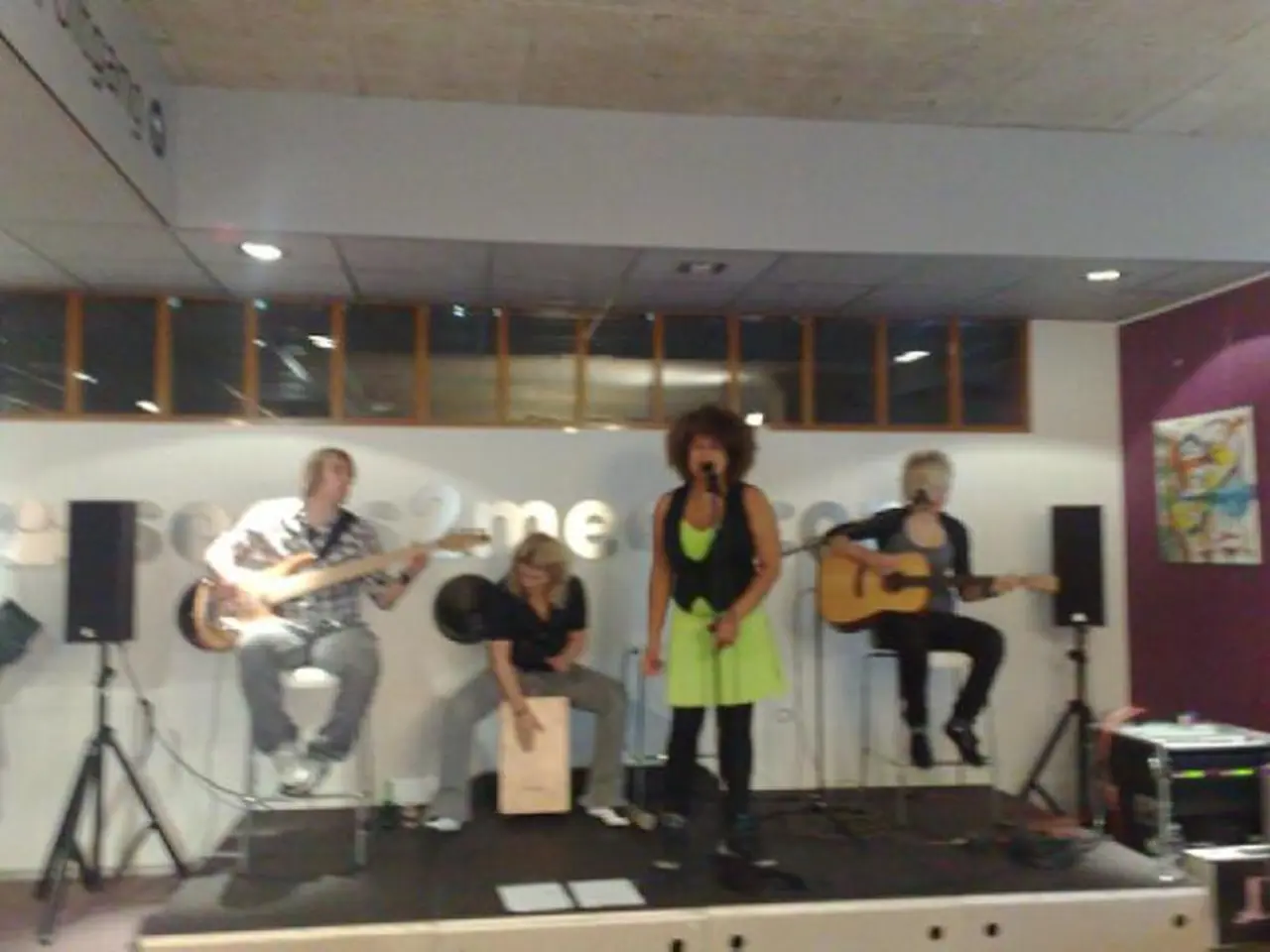Comprehensive Insight into Convolution Reverb: An In-depth Exploration
In the world of audio production, achieving a sense of immersion and realism is paramount. One tool that has gained significant traction in this pursuit is convolution reverb.
Convolution reverb uses recordings of actual spaces to simulate real-life acoustics, offering a level of realism that surpasses traditional methods. This technology is not only limited to music production but extends to sound design for film and media, and even immersive broadcast mixing.
Plugins like the AltiSpace and SIR1, which are available for free, can help blend vintage sounds seamlessly into modern projects. For instance, the AltiSpace plugin is praised for adding believable ambience and spatial depth, particularly for instruments like bass in improvisation sessions.
Professional-grade tools such as Waves IR-L Convolution Reverb, Altiverb, and Space Designer in Logic Pro are favourites among producers. These tools offer personalised sound design by allowing alterations to impulse responses and advanced features.
In music production, convolution reverb is used to load impulse responses (IRs) from real spaces, mimicking the acoustics of actual environments. For example, the Convolver module in the Serum 2 synthesizer supports loading IRs from real spaces or creative sources to craft realistic or surreal reverbs.
In sound design for film and media, plugins like Krotos Audio's Reformer Pro and Igniter are showcased in creating complex, layered sci-fi sound effects and dynamic ambient atmospheres. Though not explicitly stated as convolution reverb, projects using these plugins emphasise creating immersive and realistic soundscapes.
Convolution reverb is also embedded in broadcast and live mixing workflows for immersive formats like Dolby Atmos. Tools like Waves Immersive Wrapper facilitate transforming stereo or mono effects into immersive multichannel environments, ensuring realistic spatial placement.
Experimenting with the length and decay of reverb tails can dynamically alter a sound's flow. Many convolution reverbs today come with customisable reverb tails, providing a fascinating way to add unique textures to your sound.
Integrating vintage hardware with modern plugins offers the best of both worlds. Capturing impulse responses of your vintage hardware for later use with digital plugins preserves its unique character. The mechanical quirks of retro gear can add authenticity to your mix.
Dual mono tracks allow greater control over reverb placement, while exploring advanced features like automation and visualization tools can further enhance your sound design. Using an EQ can further tweak the frequency response of the IR.
In conclusion, convolution reverb is a powerful tool in enhancing spatial depth in music tracks and creating immersive and realistic audio environments. Whether you're a music producer, a sound designer, or a broadcaster, convolution reverb is a valuable asset in your audio production arsenal.
- In a home studio setting, guitar performances can be enhanced with the use of convolution reverb, which simulates real-life acoustics to provide a sense of immersion and realism.
- For music production, hardware gadgets like vintage guitars can be paired with modern plugins that capture their impulse responses for later use, thereby preserving their unique character.
- In the world of music production, technology has enabled tools like audio interfaces to record vocals and instruments with crisp audio quality, making it easier to achieve professional-grade music production.
- The music industry is continually evolving, with innovative audio solutions such as convolution reverb offering advanced features for sound design in music, film, media, and even immersive broadcast mixing.
- Studio sessions can benefit from the use of high-quality convolution reverb plugins, such as Waves IR-L Convolution Reverb, Altiverb, or Space Designer in Logic Pro, which offer personalised sound design and advanced features for music production.




